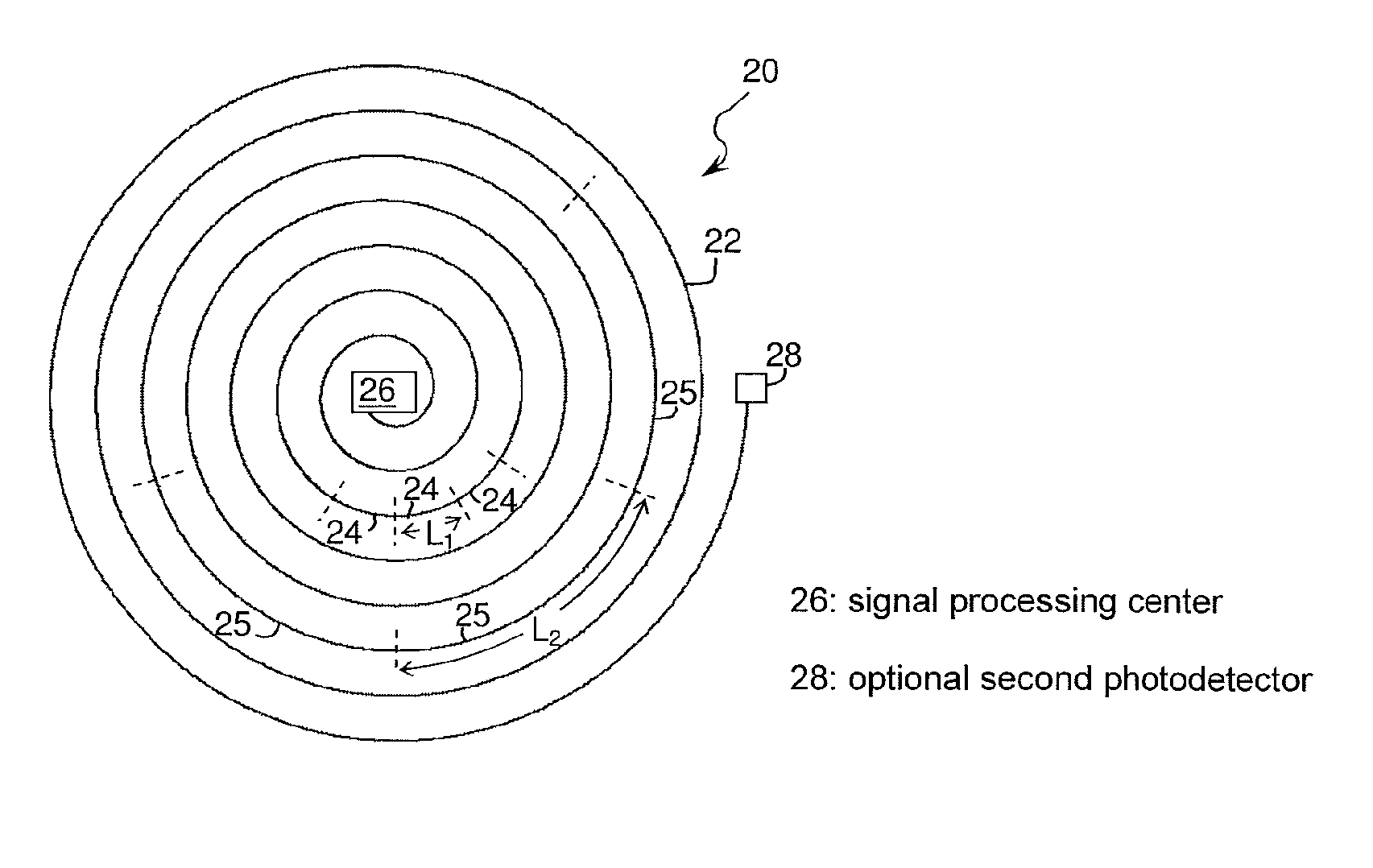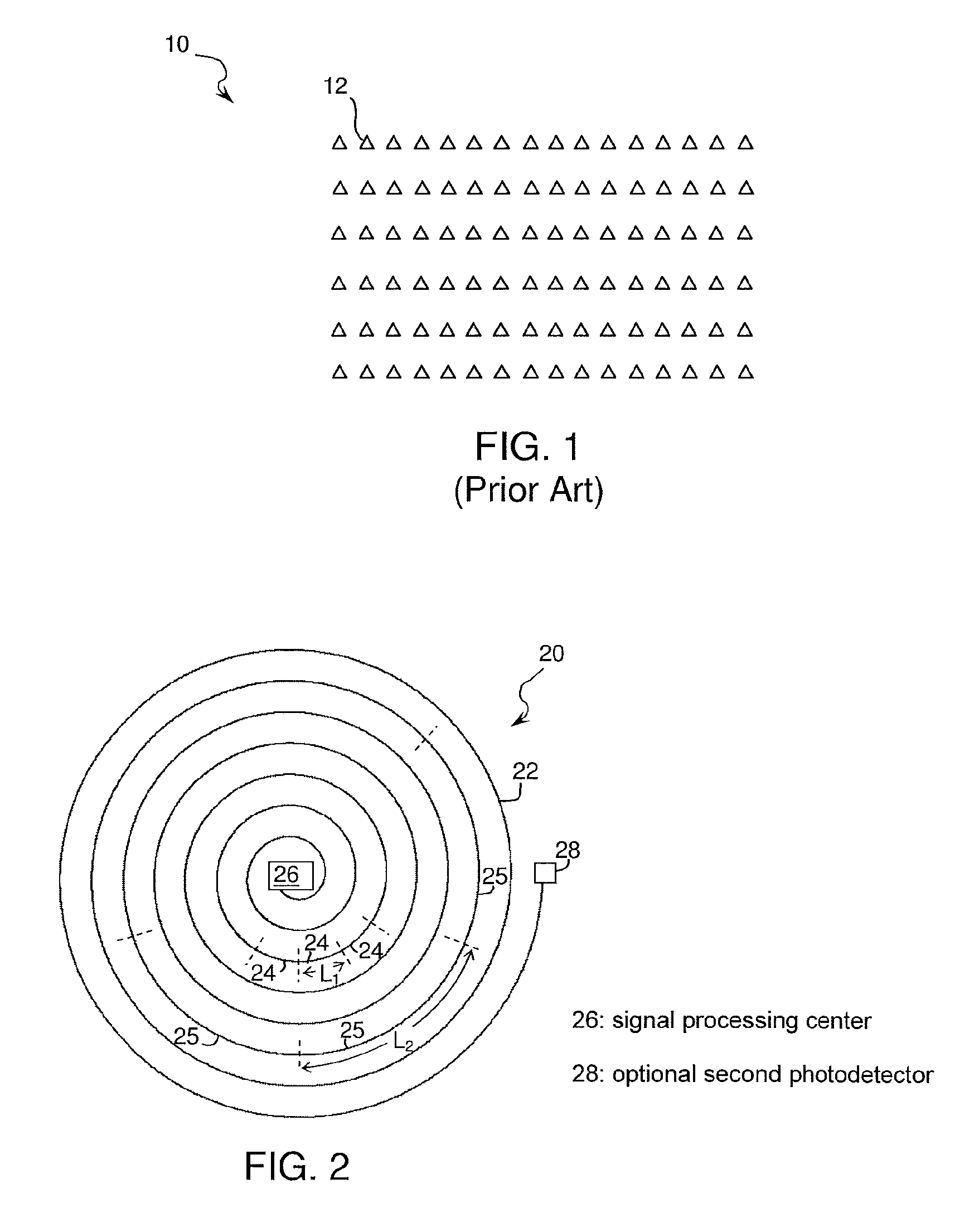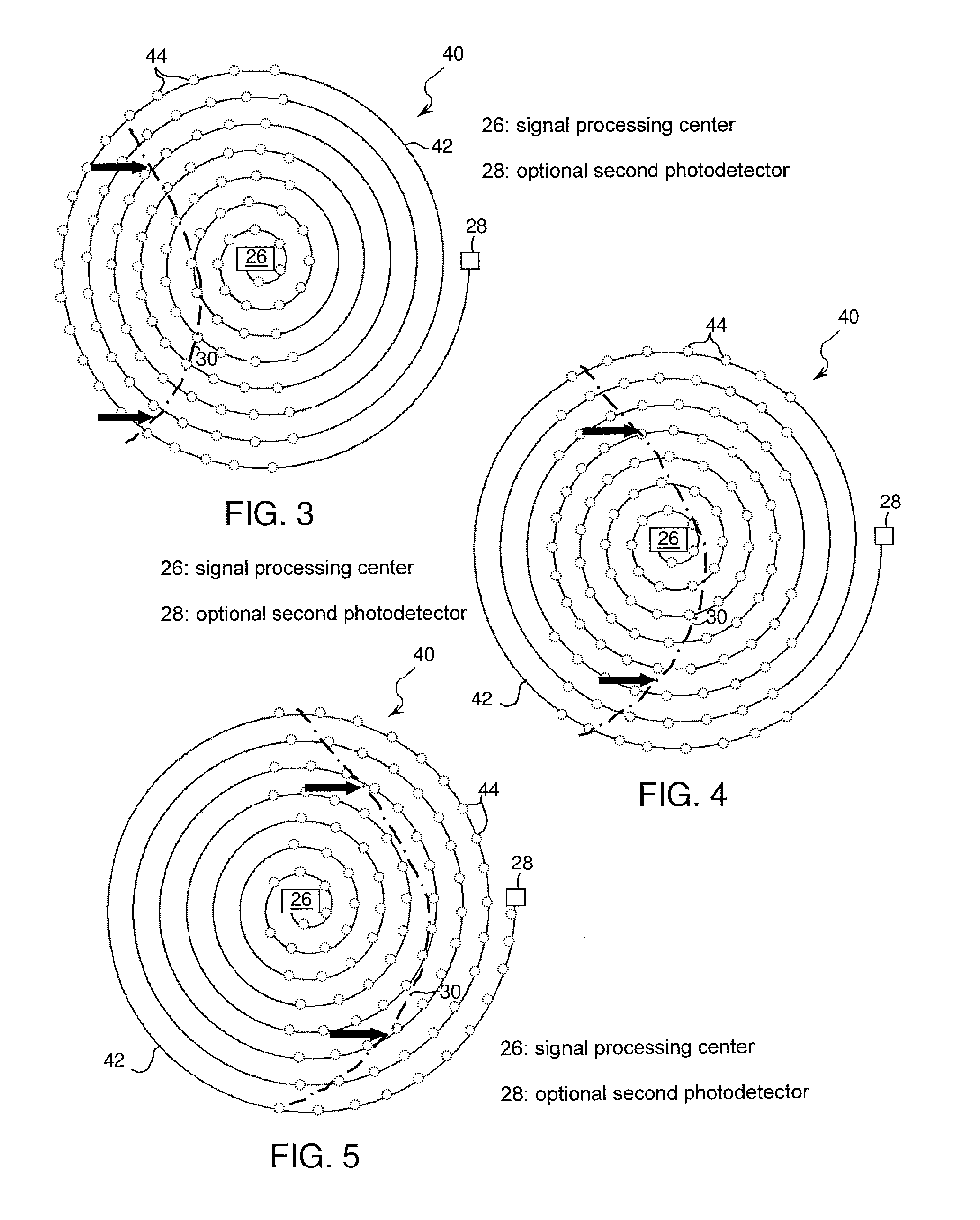Areal monitoring using distributed acoustic sensing
a distributed acoustic sensing and areal monitoring technology, applied in the field of reservoir investigation, can solve the problems of suboptimal or even ineffective configuration of the initial deployment of the geophone or hydrophone, and the large number of geophones or hydrophones is relatively expensive to acquire, deploy and maintain, and achieves the effect of inexpensive acquisition, deployment and maintenan
- Summary
- Abstract
- Description
- Claims
- Application Information
AI Technical Summary
Benefits of technology
Problems solved by technology
Method used
Image
Examples
Embodiment Construction
[0025]Referring initially to FIG. 1, an array 10 of conventional acoustic sensors 12 may be deployed as shown. The number of sensors available to cover the desired area is typically limited by cost; once the number of available sensors is established, the sensors are deployed. Sensors may also be deployed in vertical or horizontal boreholes at intermediate depths between the surface and the formations of interest. For on-shore applications, the sensors may be deployed manually, such as by using a GPS system to place each sensor in a desired location, or they may be installed at the bottom of purposely drilled shallow boreholes. For offshore applications, the sensors, referred to as Ocean Bottom Seismometers (OBS) may be deployed by remotely operated vehicle (ROV) and placed on the seabed at desired locations, or they may be deployed in cabled configurations with fixed inter-sensor spacings via Ocean Bottom Cables (OBC) laid on the seabed.
[0026]Regardless of the mode or manner of dep...
PUM
 Login to View More
Login to View More Abstract
Description
Claims
Application Information
 Login to View More
Login to View More - R&D
- Intellectual Property
- Life Sciences
- Materials
- Tech Scout
- Unparalleled Data Quality
- Higher Quality Content
- 60% Fewer Hallucinations
Browse by: Latest US Patents, China's latest patents, Technical Efficacy Thesaurus, Application Domain, Technology Topic, Popular Technical Reports.
© 2025 PatSnap. All rights reserved.Legal|Privacy policy|Modern Slavery Act Transparency Statement|Sitemap|About US| Contact US: help@patsnap.com



